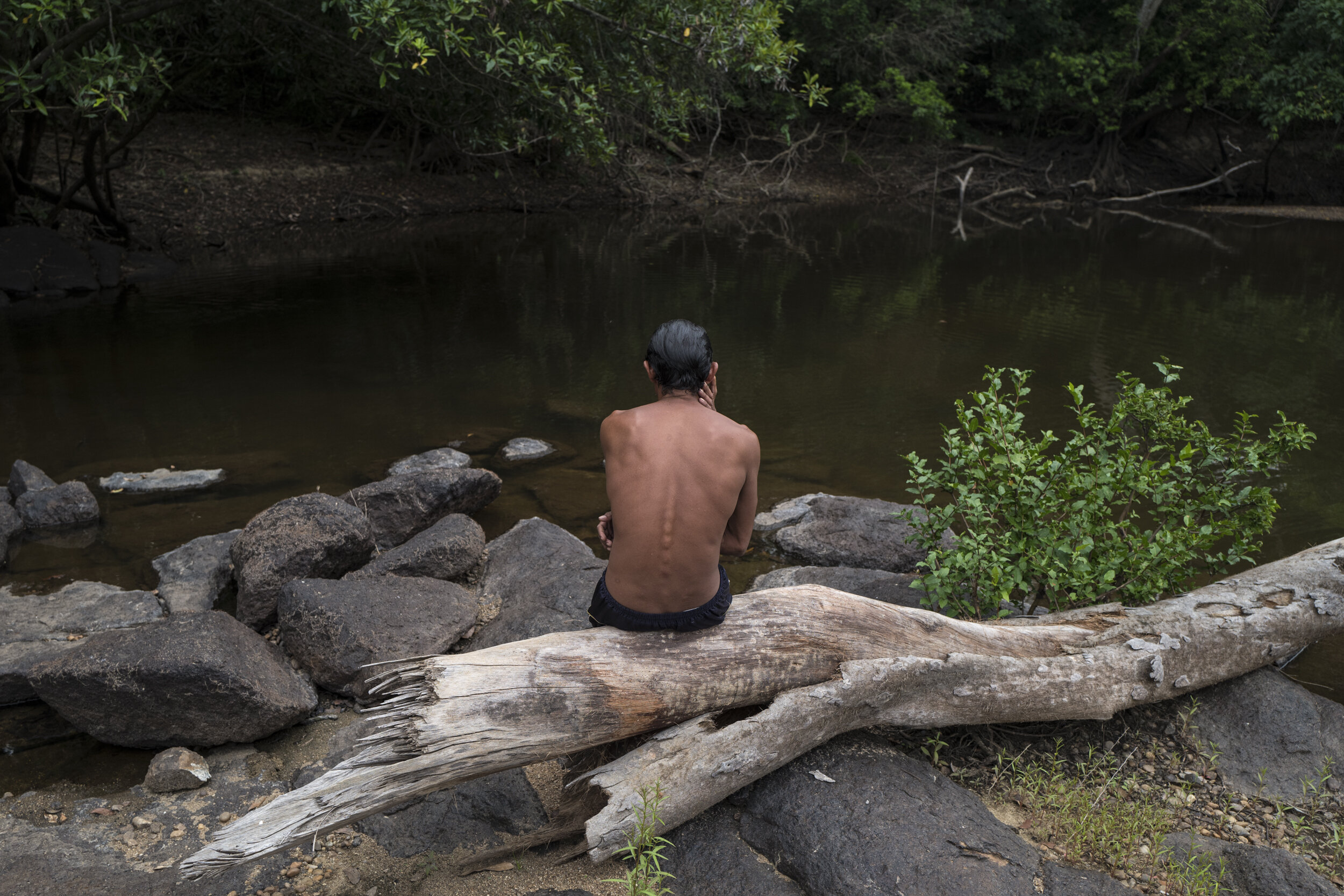
Amazon on fire
In 2019, deforestation in the Brazilian Amazon has already virtually doubled its rate as well as global attention to the issue, because of the recent boom in forest fires and the clear anti-environmental stance of the new Brazilian government.
In August 2019, the Amazon biome saw at 196% increase in the number of fires while the deforestation rate stood at + 222% (INPE).
Forest fires are directly related to deforestation, as the final act of a well-established land grabbing process.
During the dry season, it’s easy to see fields burned to prepare the ground for ranching or farming
Incidentally or not, flames can reach forests adjacent to ranches, previously deprived of noble timber, illegally creating new areas for economic activities.
The recent weakening of environmental taxation agencies, makes it quite impossible to stem this phenomenon.
In recent years, agriculture on an industrial scale, such as soybean farming and cattle ranching, have been strongly affecting the Amazon forest, becoming the first cause of deforestation.
Brazil has been the world's largest exporter of meat for years, and the agribusiness sector generates about a quarter of the country's GDP.
As a result of these gigantic economic interests, indigenous reserves and national parks are being invaded like never before.
According to CIMI, the Indigenous Missionary Council Rights Group, more than 160 indigenous territories had been invaded since Jan 2019, more than double last year.
These data worried the world experts about the risk of a new genocide, fears reinforced by the recent declarations of the newly elected President of Brazil who has repeatedly declared that he wants to stop the process of demarcation of indigenous lands, encouraging the commercial exploration of the Brazilian Amazon.
The state of Rondonia, where these photographs have been taken, is considered one of the most deforested areas in the Amazon, according to NASA
The indigenous land Uru Eu Wau Wau, home to one of the largest remained native forest in the state of Rondonia with its 1.8 million hectares, has always been under severe pressure by land invaders and it’s surrounded by cattle ranches.
According to the indigenous people portrayed in this report, such attacks have intensified in recent months resulting in threats and invaded lands at just a few kilometers from the indigenous villages.

Juripe, 40, sits after diving into its waters of the Jamarí River, within the Uru Eu Wau Wau Indigenous Territory, Rondonia.
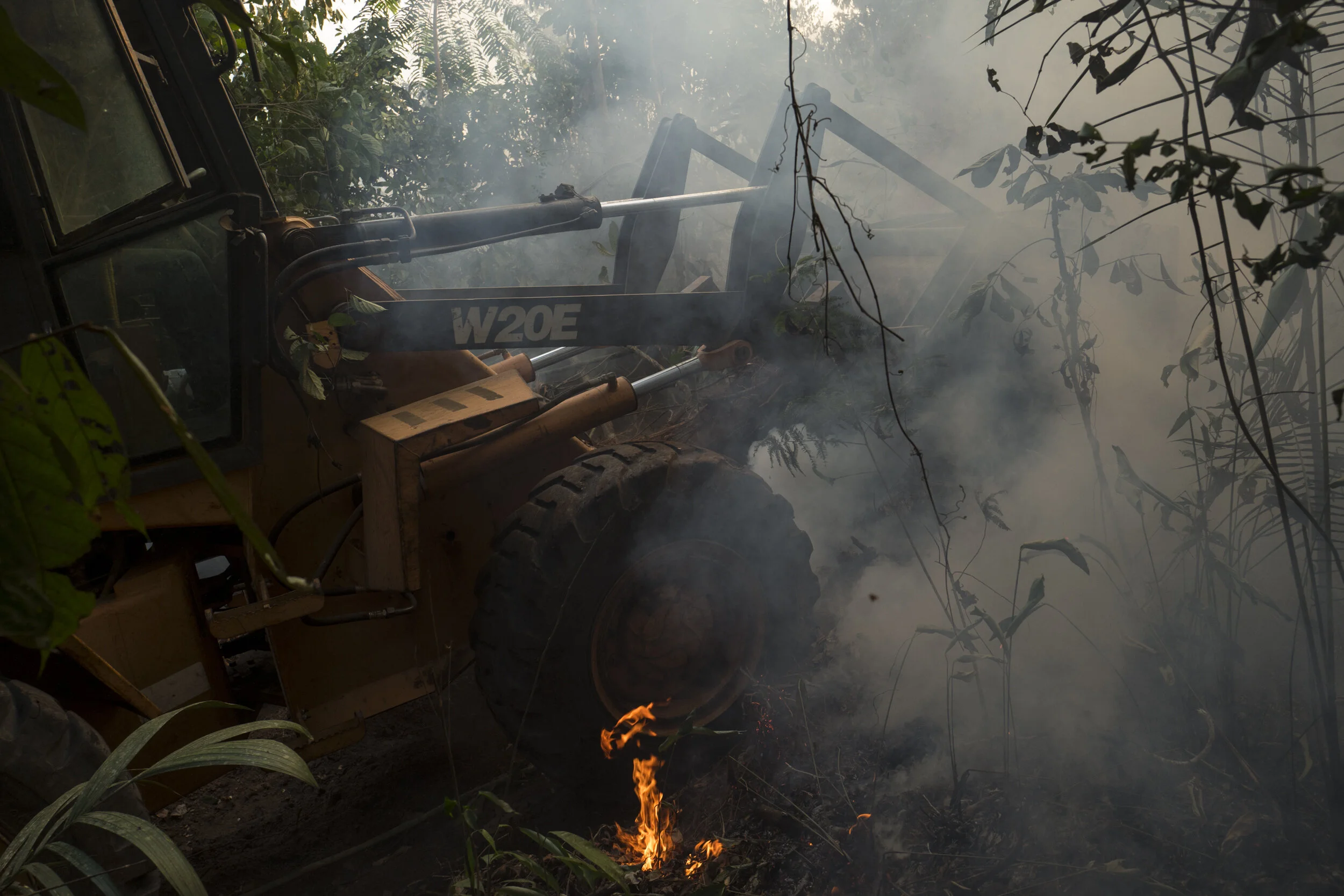
A man working on a wheel loader tries to contain a fire, supposedly hanged by unknown in a small portion of rainforest at the edge of a street near Porto Velho, Brazilian Amazon.
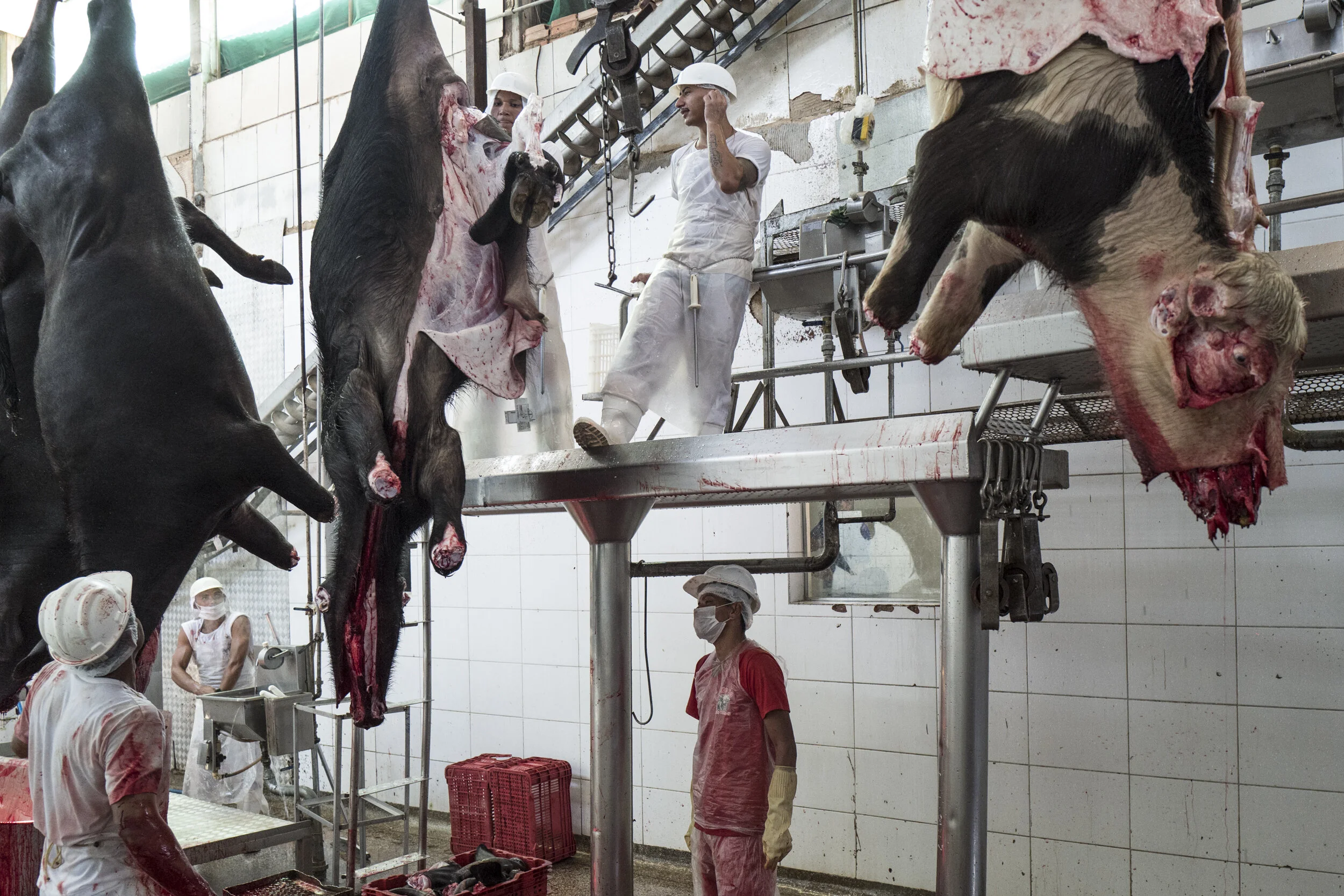
Workers inside a slaughterhouse in Porto Velho. Brazil is the world's largest exporter of beef, one of the main causes of deforestation in Brazilian Amazon together with soybean monocultures.
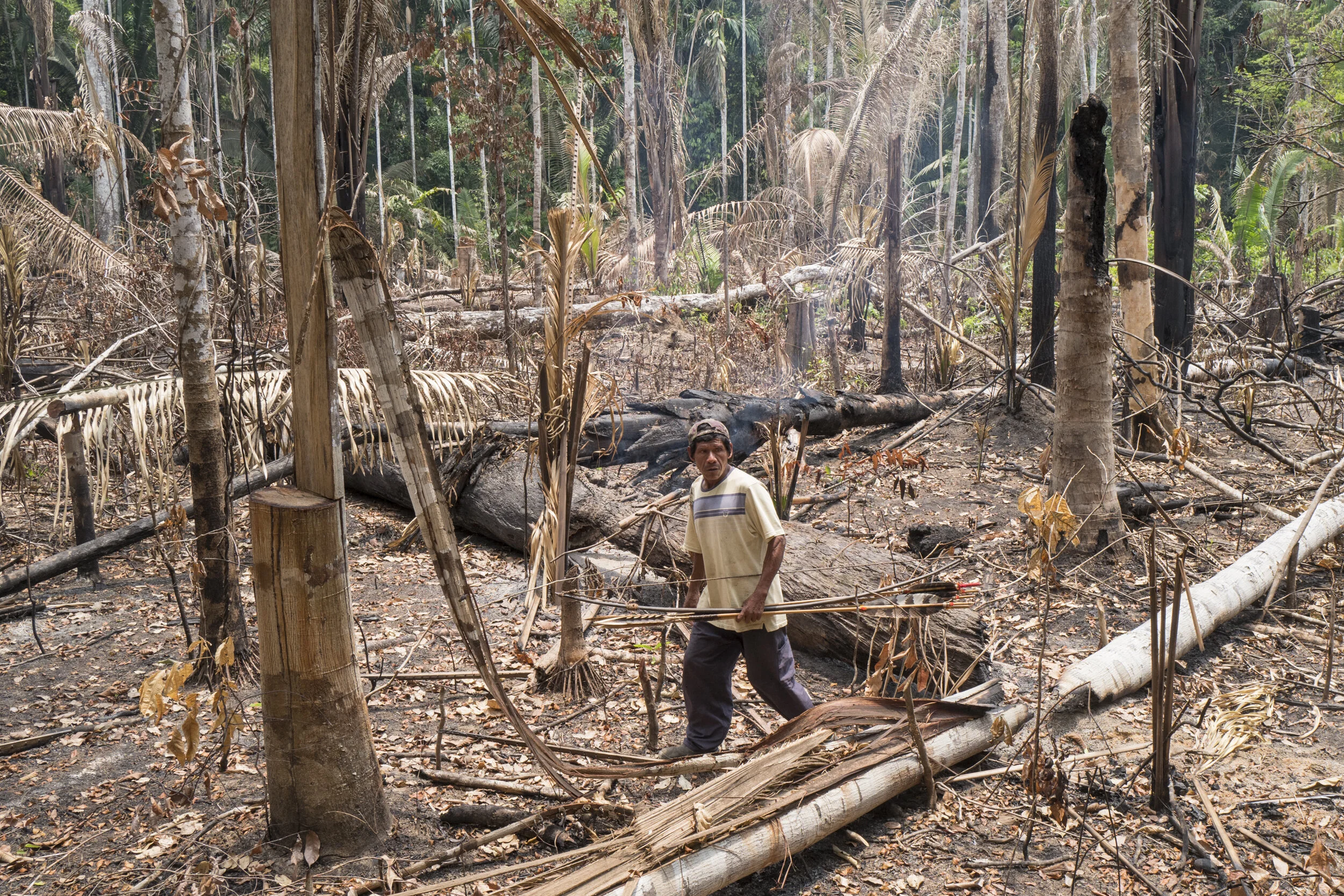
An indigenous man walks in a recently invaded and burned rainforest located inside the indigenous reserve Uru Eu Wau Wau, Rondonia.Contacted in 1981, the indigenous Uru Eu Wau Wau share with uncontacted tribes a vast territory of native rainforest, heavily pressured by agribusiness.According to them, the attacks have increased significantly in recent months, because the current political agenda in favor of exploring the Amazon rainforest, including into the indigenous reserves.According to CIMI, the Indigenous Missionary Council, more than 160 indigenous territories had been invaded since January.
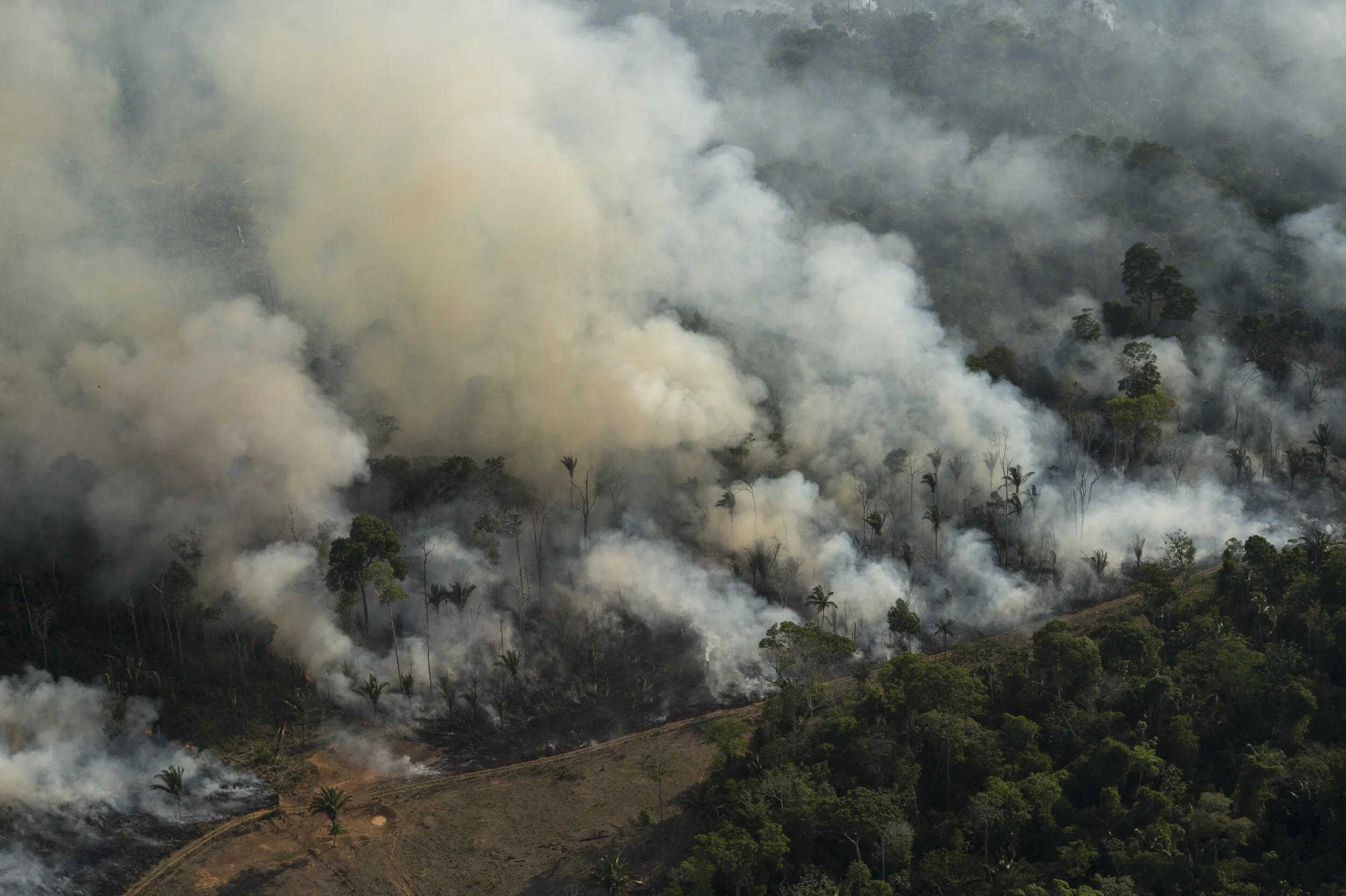
Land burned to be cleared for cattle grazing near Porto Velho. The Amazon forest is facing the highest deforestation and forest fires in the last 9 years.
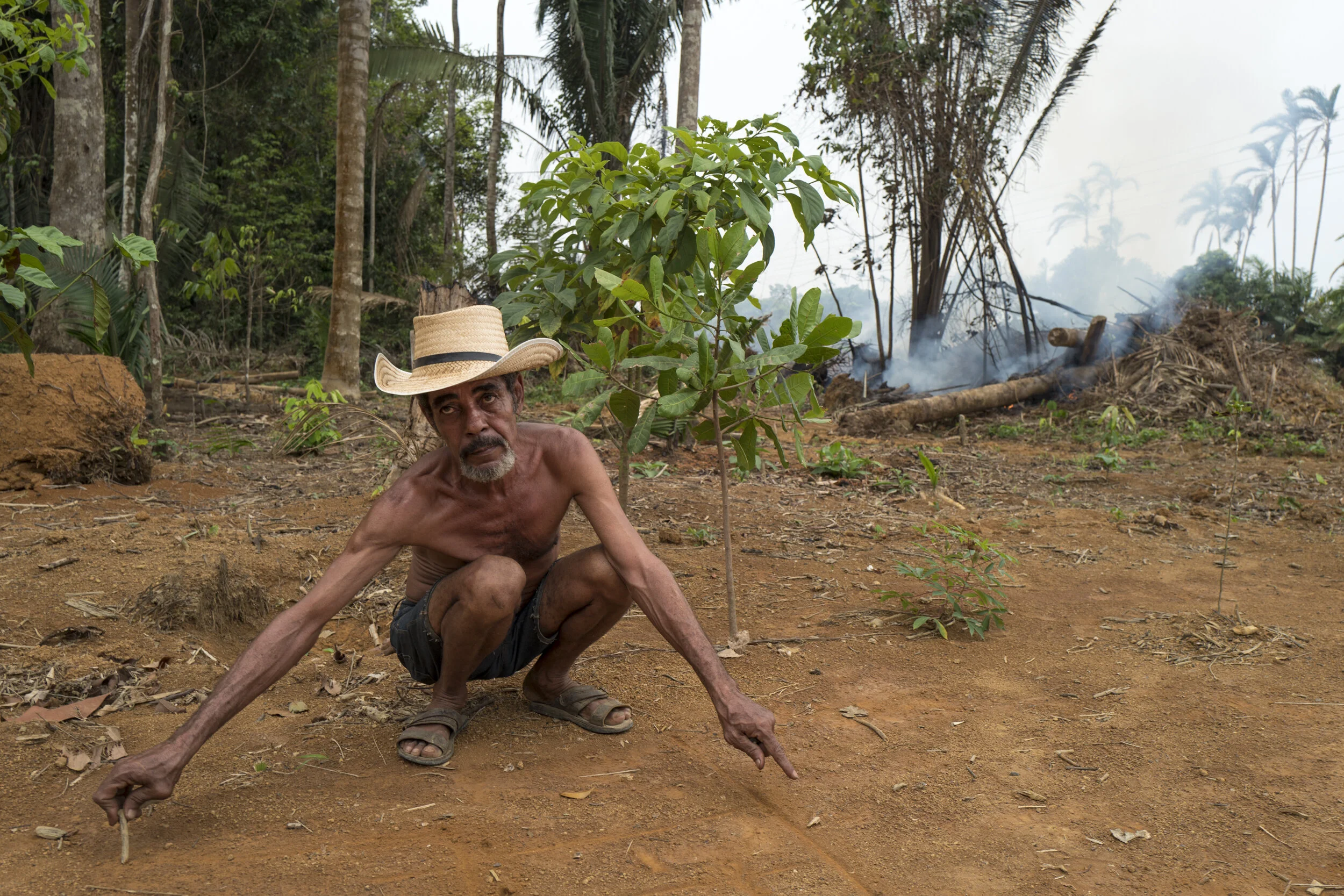
Cosmo, 60, shows the division of a 100 hectares rainforest land inherited from his father more than 40 years ago and now divided between 10 brothers near Alto Paraiso, Brazil. The land was donated by the INCRA (National Institute for Colonization and Agrarian Reform) in the 70s, in of first national attempt of colonization of areas that were still intact in the Amazon rainforest. This migration sequence induced by the Government operated as fundamental agents of deforestation.
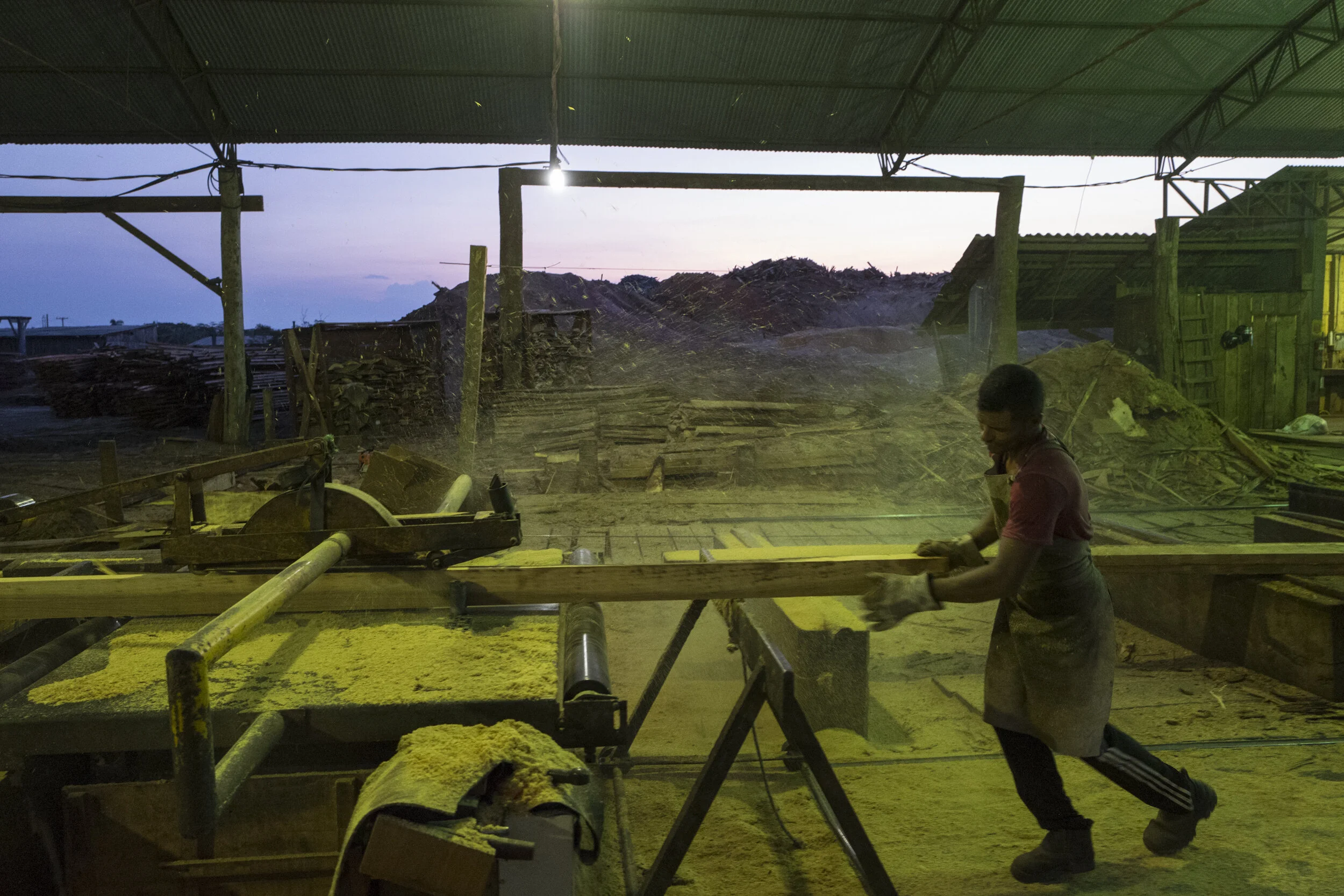
A sawmill in jaci paraná, Rondonia. Rondonia is one of the most deforested states in the Amazon region, due to the strong pressure of agribusiness and the consequent invasion of public lands, even in indigenous territory. According to NASA, State of Rondonia is one of the most deforested in the Amazon. According to Greenpeace, Rondonia is among the states who place more illegal wood, because of the easy circumvention of certificates of origin.
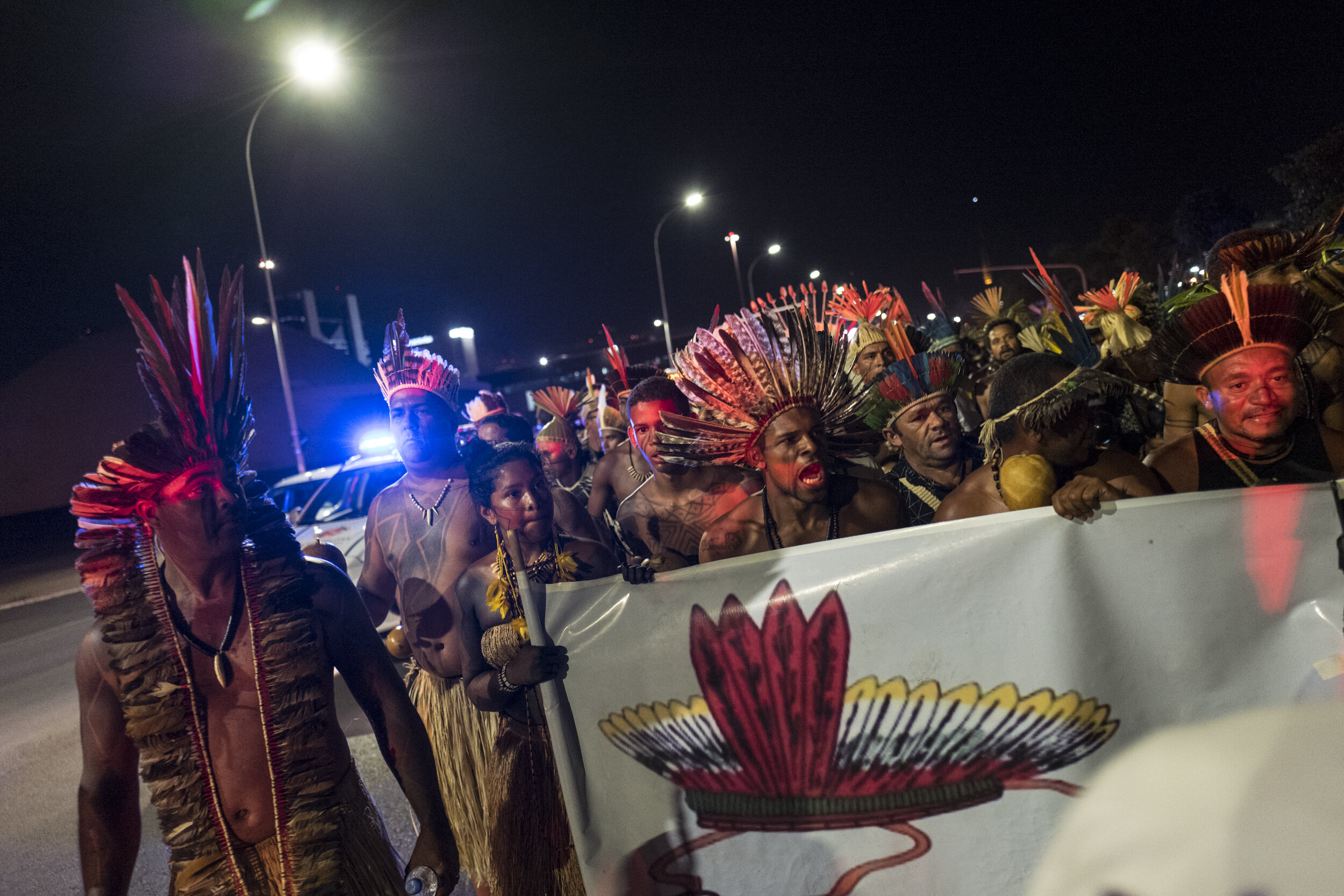
Indigenous people walk the path that leads to the Brazilian government building protesting for the respect of indigenous rights, in Brasilia.
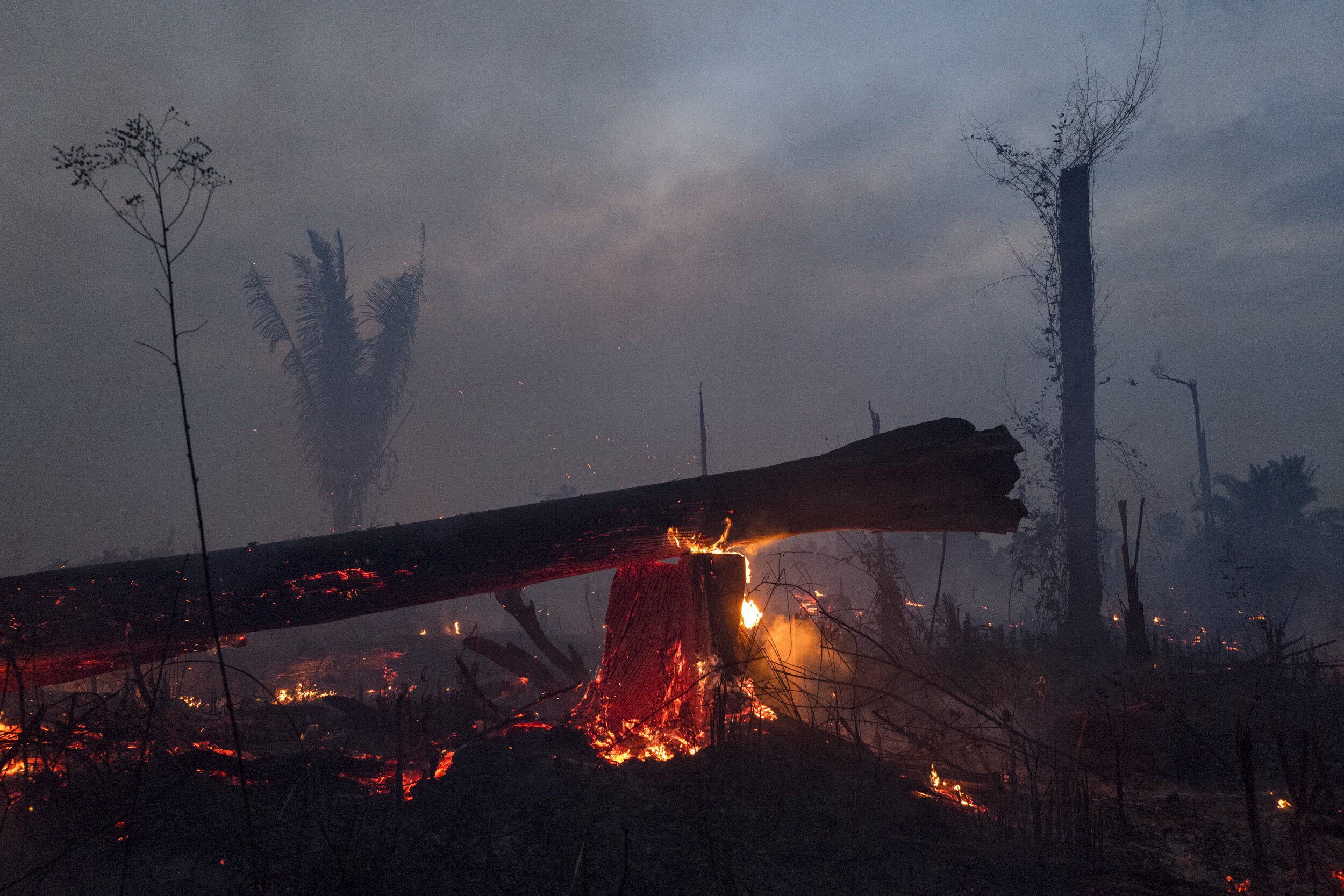
July 18, 2019 A chopped Brazil Nut tree (Bertholletia excelsa) lies on a land being burned for cattle grazing near Porto Velho. The species, that can live up to 800 years, is currently listed as threatened with extinction by the Brazil’s Ministry of Environment, and it's forbidden to cut down. Brazil nut harvesting represents a sustainable and profitable economy for local communities in the Amazon region but the trees are becoming rarer, mainly due to deforestation and climate change.
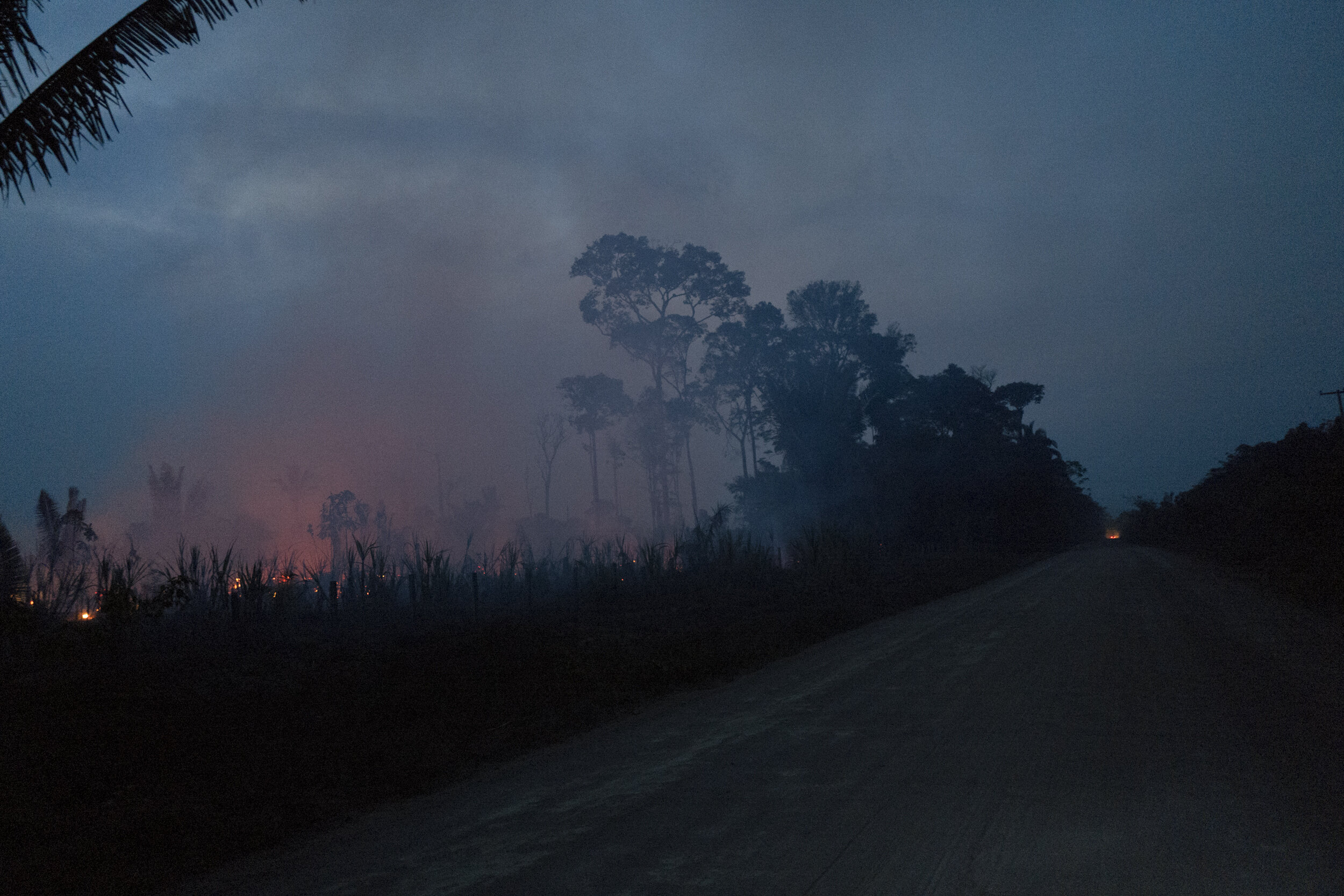
A fire in a rural area of Porto Velho.









